Multi-Objective Optimization for Smart House Applied Real Time Pricing Systems
Abstract
:1. Introduction
2. Power System Model
2.1. Smart House Model
2.2. Supply-Demand Balance of the Smart House
2.3. Photovoltaic System
2.4. Solar Collector System
3. Optimization Method
3.1. Regulation Effort Evaluation Method
3.2. Objective Functions and Constraints
3.3. NSGA2
- Step 1:
- Making the initial population P of size N of the solution, P is the parent population.
- Step 2:
- Crossover and mutation are performed on the individual parent population, making the offspring population Q of size N.
- Step 3:
- Combining the parent population P and the offspring population Q, R of size is made.
- Step 4:
- R is Evaluated by the objective functions; the Pareto front is ranked by the non-dominated sorting.
- Step 5:
- The population is chosen till its size is N from the upper rank Pareto front; its population is the parent population in the next generation. If the number of the same rank Pareto front is over size N, a bad solution of diversity is deleted by crowding-distance computation.
- Step 6:
- If the generation reaches the max generation, the search is finished. Otherwise, the process returns to Step 2.
4. Simulation Results
4.1. Simulation Conditions
4.2. Discussion of the Simulation Results
5. Conclusions
Author Contributions
Conflicts of Interest
References
- Organization for Cross-Regional Coordination of Transmission Operators (OCCTO), Tokyo, JAPAN. 2015. Available online: https://www.occto.or.jp/ (accessed on 31 March 2016).
- Ministry of Economy, Trade and Industry (METI), Tokyo, Japan. Retailers_List. Available online: http://www.enecho.meti.go.jp/category/electricity_and_gas/electric/summary/operators_list/ (accessed on 31 March 2016).
- Depuru, S.S.S.R.; Wang, L.; Devabhaktuni, V. Smart meters for power grid: Challenges, issues, advantages and status. Renew. Sustain. Energy Rev. 2011, 15, 2736–2742. [Google Scholar] [CrossRef]
- Santoshkumar; Udaykumar, R.Y. Development of Markov Chain-Based Queuing Model and Wireless Infrastructure for EV to Smart Meter Communication in V2G. Int. J. Emerg. Electr. Power Syst. 2015, 16, 153–163. [Google Scholar]
- Anees, A.; Chen, Y.P. True real time pricing and combined power scheduling of electric appliances in residential energy management system. Appl. Energy 2016, 165, 592–600. [Google Scholar] [CrossRef]
- Power Smart Pricing, Illinois, Ameren. Available online: http://www.powersmartpricing.org/ (accessed on 31 March 2016).
- Hattori, T.; Toda, N. Demand Response Programs for Residential Customers in the United States -Evaluation of the Pilot Programs and the Issues in Practice-. Available online: http://criepi.denken.or.jp/jp/kenkikaku/report/detail/Y10005.html (accessed on 31 March 2016).
- Midcontinent Independent System Operator. Available online: https://www.misoenergy.org/Pages/Home.aspx (accessed on 31 March 2016).
- Japan Center for Climate Change Actions (JCCCA). Available online: http://www.jccca.org/trend_world/conference_report/cop21/2-1212.html (accessed on 31 March 2016).
- Bracale, A.; Carpinelli, G.; Fazio, D.A.; Khormali, S. Advanced, Cost-Based Indices for Forecasting the Generation of Photovoltaic Power. Int. J. Emerg. Electr. Power Syst., 2014, 15, 77–91. [Google Scholar] [CrossRef]
- Central Research Institute of Electric Power Industry. Electric Power Condition in the World, Lessons for Japan. Available online: http://criepi.denken.or.jp/jp/serc/denki/world_book/eneco.pdf (accessed on 31 March 2016).
- Khederzadeh, M.; Khalili, M. High Penetration of Electrical Vehicles in Microgrids: Threats and Opportunities. Int. J. Emerg. Electr. Power Syst. 2014, 15, 457–469. [Google Scholar] [CrossRef]
- Reddy, S.S.; Abhyankar, A.R.; Bijwe, P.R. Co-optimization of Energy and Demand-Side Reserves in Day-Ahead Electricity Markets. J. Emerg. Electr. Power Syst. 2015, 16, 195–206. [Google Scholar]
- Nguyen, M.Y.; Nguyen, D.M. A Generalized Formulation of Demand Response under Market Environments. J. Emerg. Electr. Power Syst. 2015, 16, 217–224. [Google Scholar] [CrossRef]
- Tanaka, K.; Yoza, A.; Ogimi, K.; Yona, A.; Senjyu, T. Optimal operation of DC smart house system by controllable loads based on smart grid topology. Renew. Energy 2012, 39, 132–139. [Google Scholar] [CrossRef]
- Li, X.H.; Hong, S.H. User-expected price-based demand response algorithm for a home-to-grid system. Energy 2014, 64, 437–449. [Google Scholar] [CrossRef]
- Erdinc, O. Economic impacts of small-scale own generating and storage units, and electric vehicles under different demand response strategies for smart households. Appl. Energy 2014, 126, 142–150. [Google Scholar] [CrossRef]
- Rastegar, M.; Fotuhi-Firuzabad, M. Load management in a residential energy hub with renewable distributed energy resources. Energy Build. 2015, 107, 234–242. [Google Scholar] [CrossRef]
- Xia, S.; Ge, X. The Optimized Operation of Gas Turbine Combined Heat and Power Units Oriented for the Grid-Connected Control. J. Emerg. Electr. Power Syst. 2016, 17, 143–150. [Google Scholar] [CrossRef]
- Soares, A.; Antunes, C.H.; Oliveira, C.; Gomes, L.A. multi-objective genetic approach to domestic load scheduling in an energy management system. Energy 2014, 77, 144–152. [Google Scholar] [CrossRef]
- Xu, S.; Yan, Z.; Zhao, X.; Zhang, L.; Feng, D.; Xu, X. Decentralized Charging of Plug-In Electric Vehicles Using Lagrange Relaxation Method at the Residential Transformer Level. J. Emerg. Electr. Power Syst. 2016, 17, 267–276. [Google Scholar] [CrossRef]
- Yoza, A.; Yona, A.; Senjyu, T.; Funabashi, T. Optimal capacity and expansion planning methodology of PV and battery in smart house. Renew. Energy 2014, 69, 25–33. [Google Scholar] [CrossRef]
- Shimoji, T.; Tahara, H.; Matayoshi, H.; Yona, A.; Senjyu, T. Comparison and Validation of Operational Cost in Smart Houses with the Introduction of a Heat Pump or a Gas Engine. J. Emerg. Electr. Power Syst. 2015, 16, 59–74. [Google Scholar] [CrossRef]
- Yoza, A.; Uchida, K.; Yona, A.; Senju, T. Optimal Operation Method of Smart House by Controllable Loads based on Smart Grid Topology. J. Emerg. Electr. Power Syst. 2013, 14, 411–420. [Google Scholar] [CrossRef]
- Shimoji, T.; Tahara, H.; Matayoshi, H.; Yona, A.; Senjyu, T. Optimal Scheduling Method of Controllable Loads in DC Smart Apartment Building. J. Emerg. Electr. Power Syst. 2015, 16, 579–589. [Google Scholar] [CrossRef]
- Uchida, K.; Senjyu, T.; Urasaki, M.; Yona, A. Installation Effect by Solar Pool System Using Solar Insolation Forecasting. In Proceedings of the 2009 Annual Conference of Power & Energy Society, Seoul, Korea, 26–30 October 2009; Volume 25, pp. 7–12.
- Shadmand, M.B.; Balog, R.S. Multi-Objective Optimization and Design of Photovoltaic-Wind Hybrid System for Community Smart DC Microgrid. IEEE Trans. Smart Grid 2014, 5, 2635–2643. [Google Scholar] [CrossRef]
- Ghazvini, M.A.F.; Soares, J.; Horta, N.; Neves, R.; Castro, R.; Vale, Z. A multi-objective model for scheduling of short-term incentive-based demand response programs offered by electricity retailers. Appl. Energy 2015, 151, 102–118. [Google Scholar] [CrossRef]
- Kamjoo, A.; Maheri, A.; Dizqah, A.M.; Putrus, G.A. Multi-objective design under uncertainties of hybrid renewable energy system using NSGA-II and chance constrained programming. Int. J. Electr. Power Energy Syst. 2016, 74, 187–194. [Google Scholar] [CrossRef]
- Deb, K.; Pratap, A.; Agarwal, S.; Meyarivan, T. A fast and elitist multiobjective genetic algorithm: NSGA-II. IEEE Trans. Evol. Comput. 2002, 6, 182–197. [Google Scholar] [CrossRef]
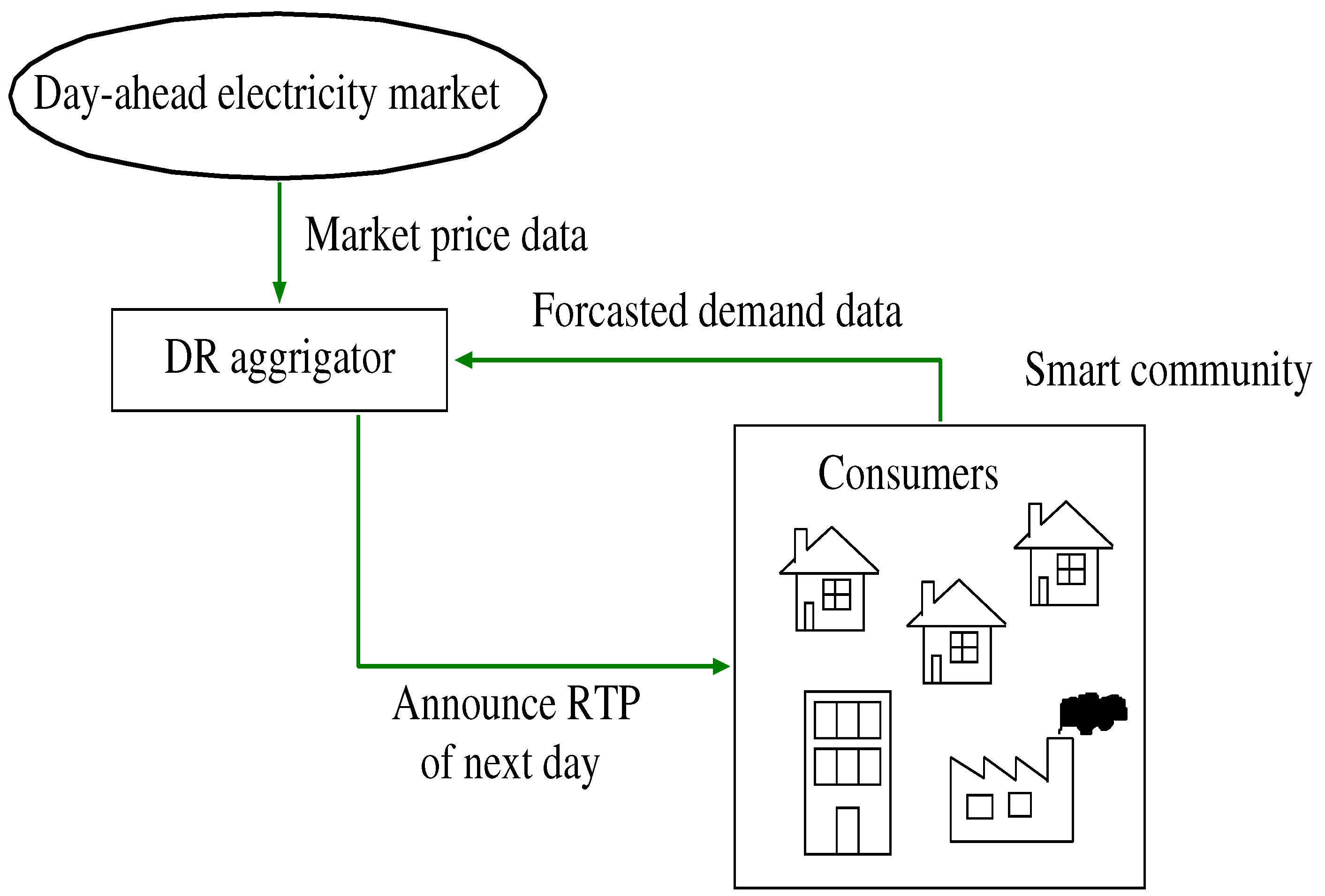
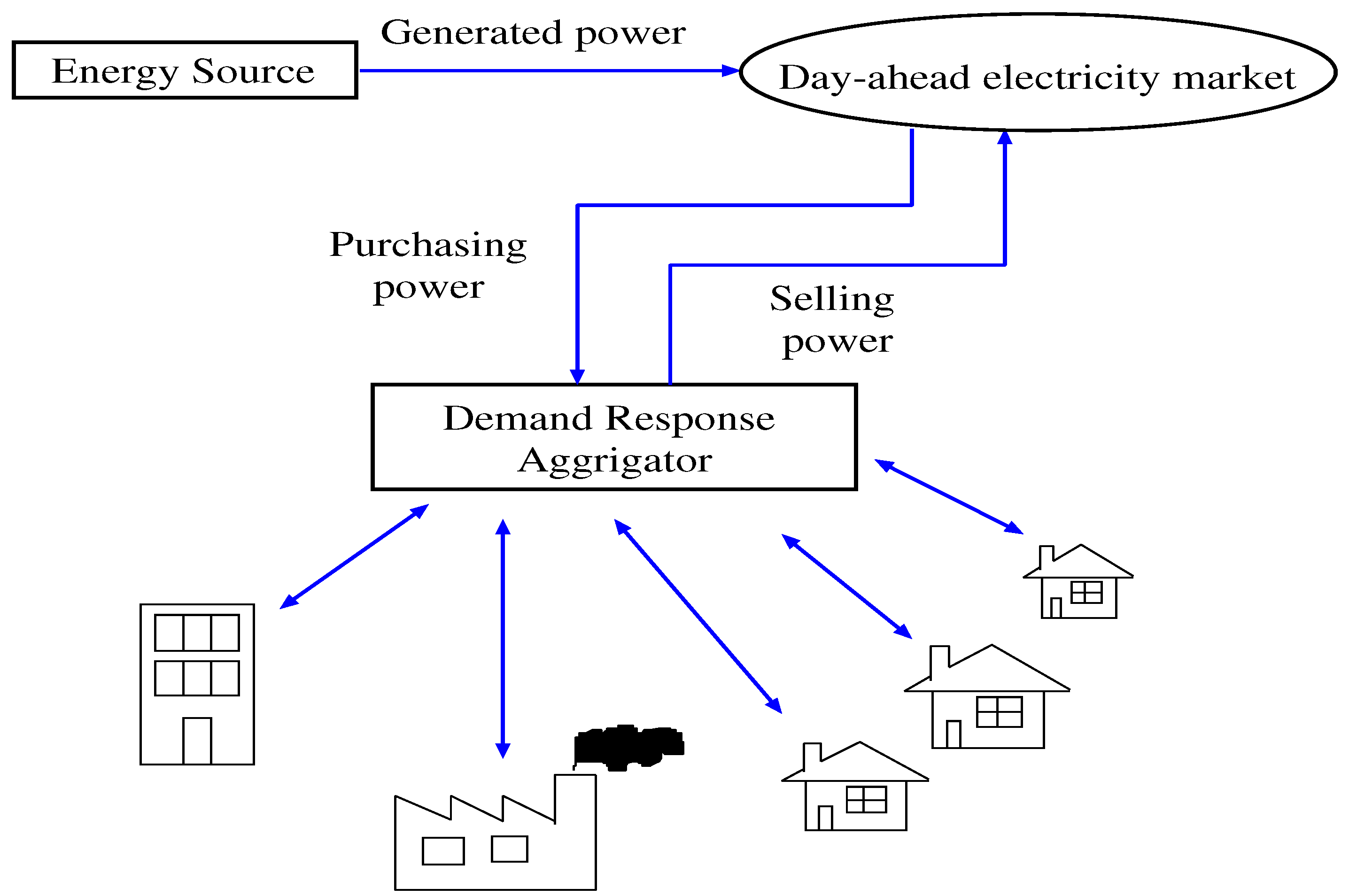

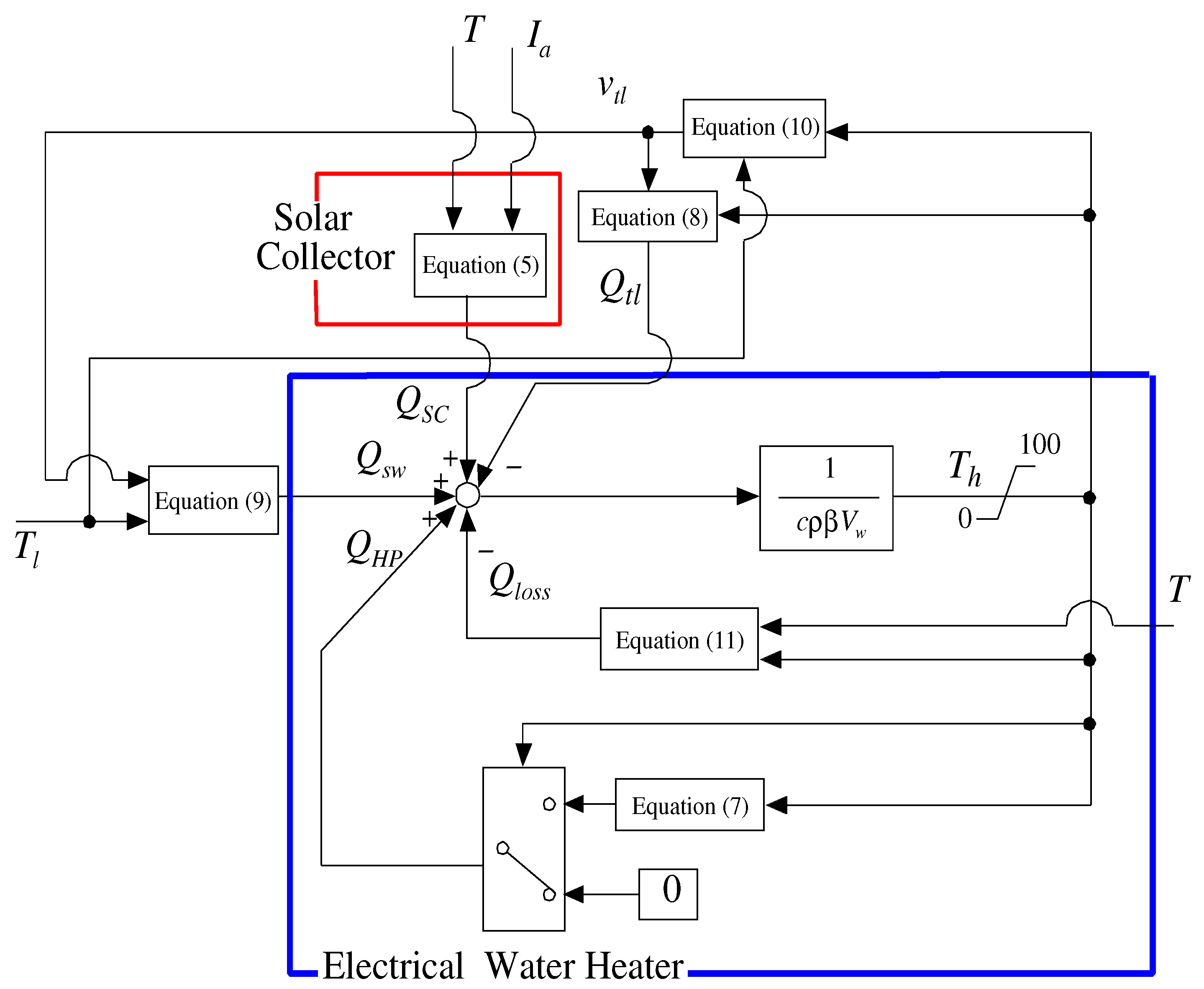

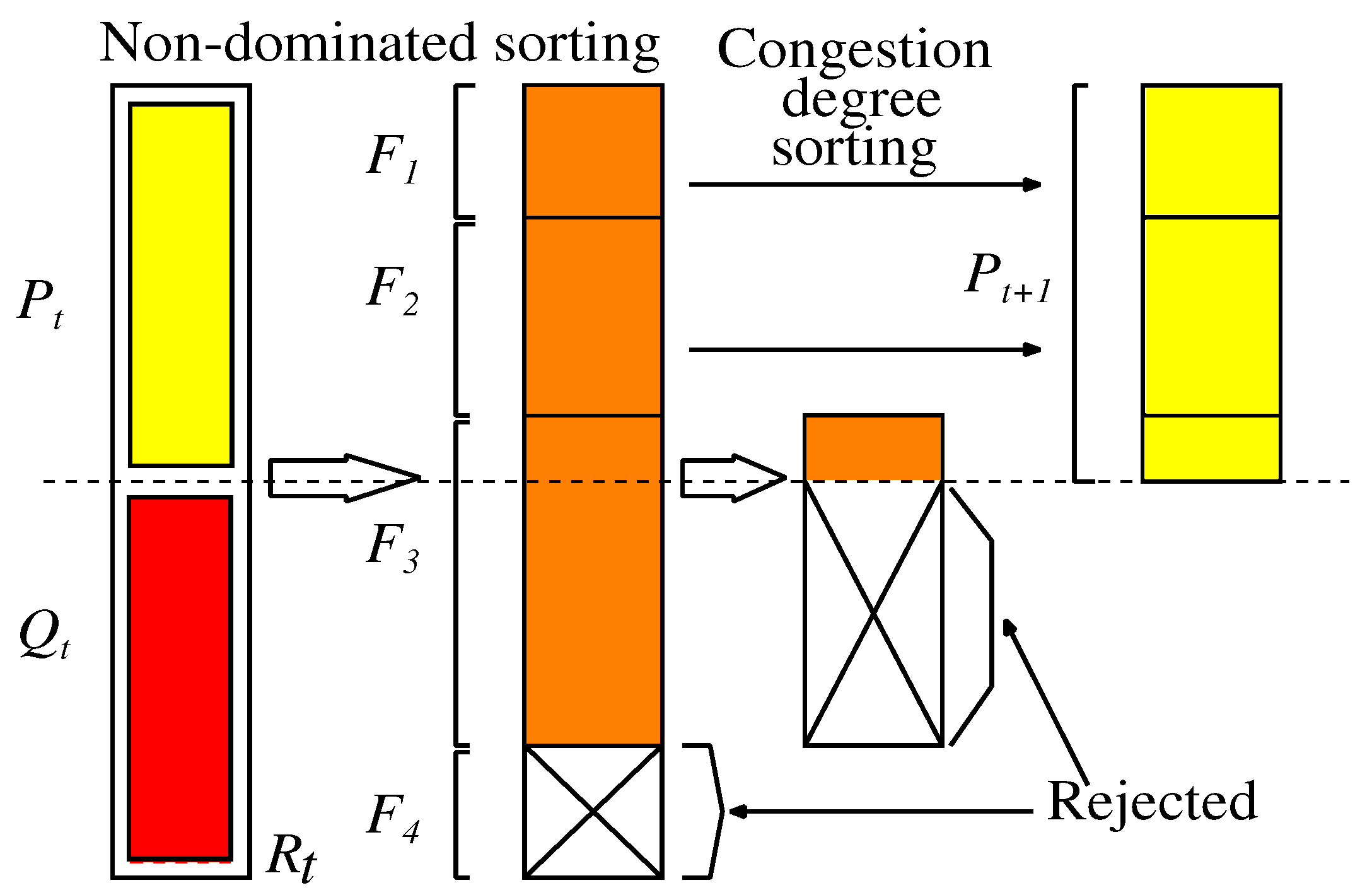

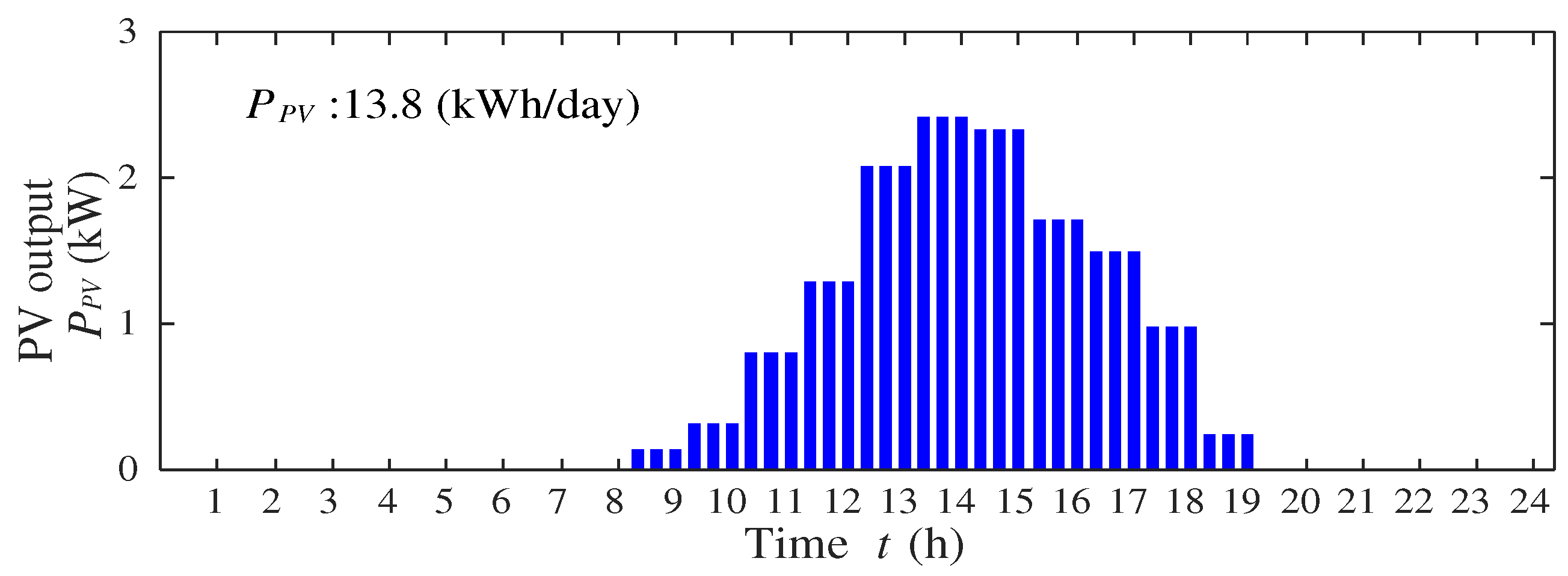
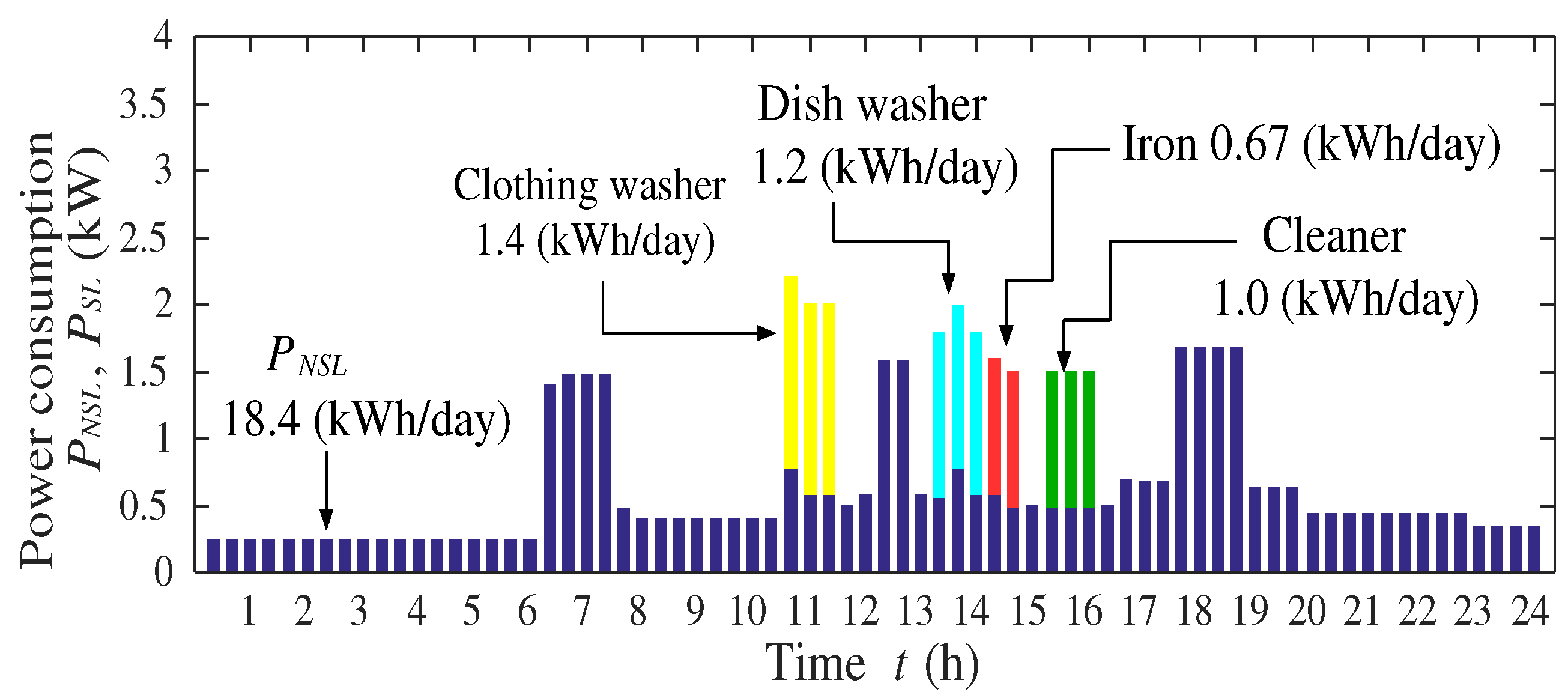
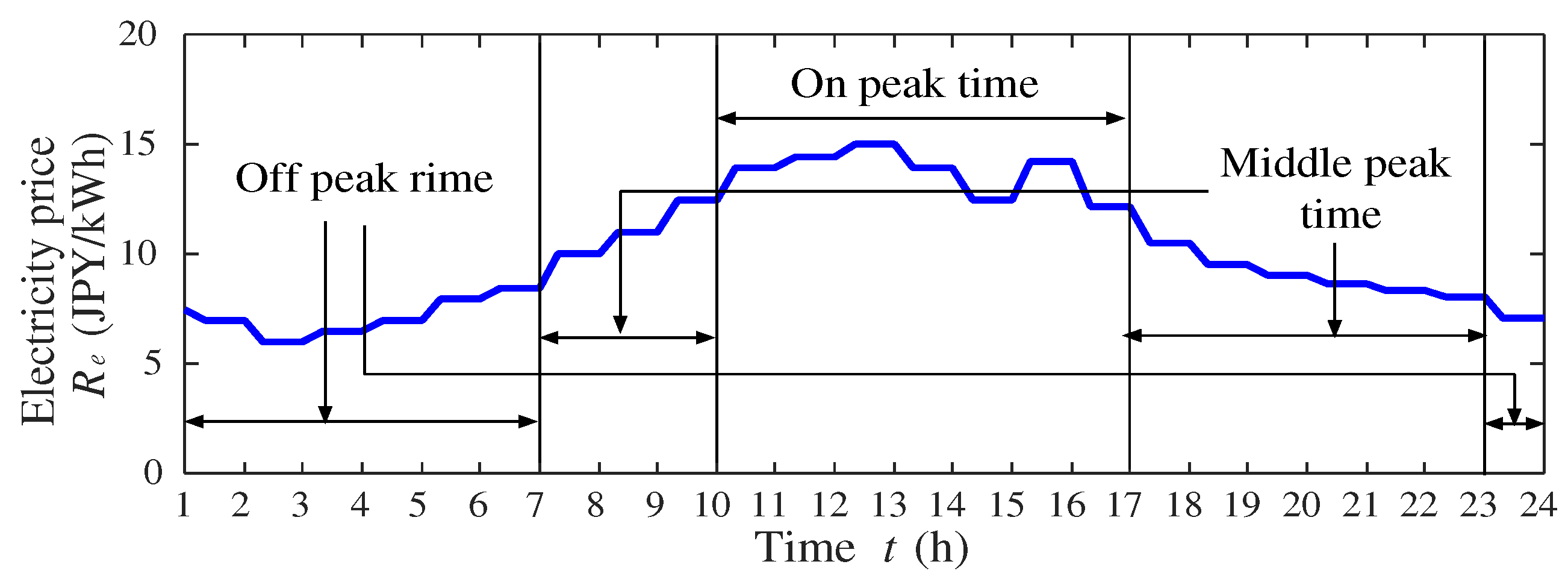

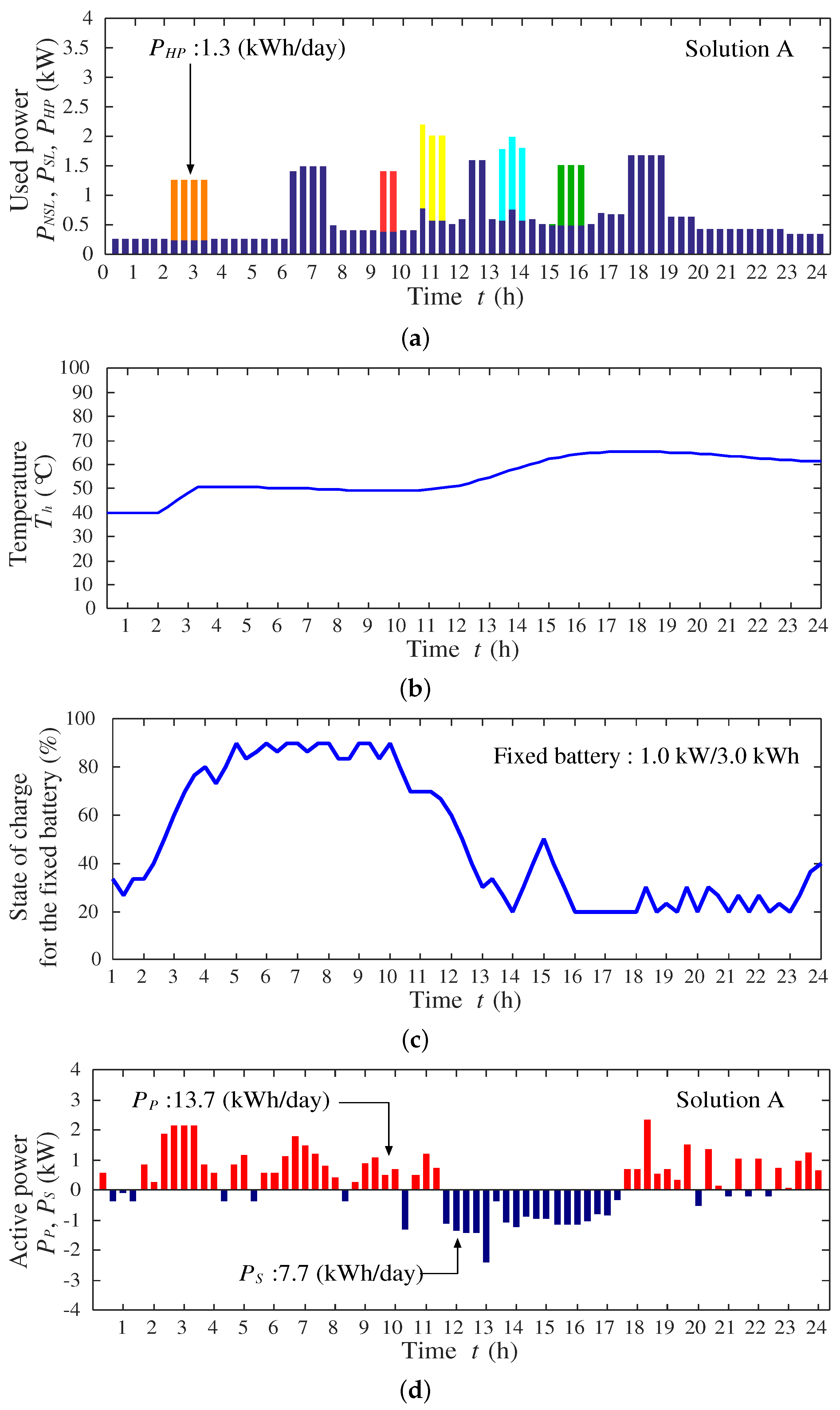
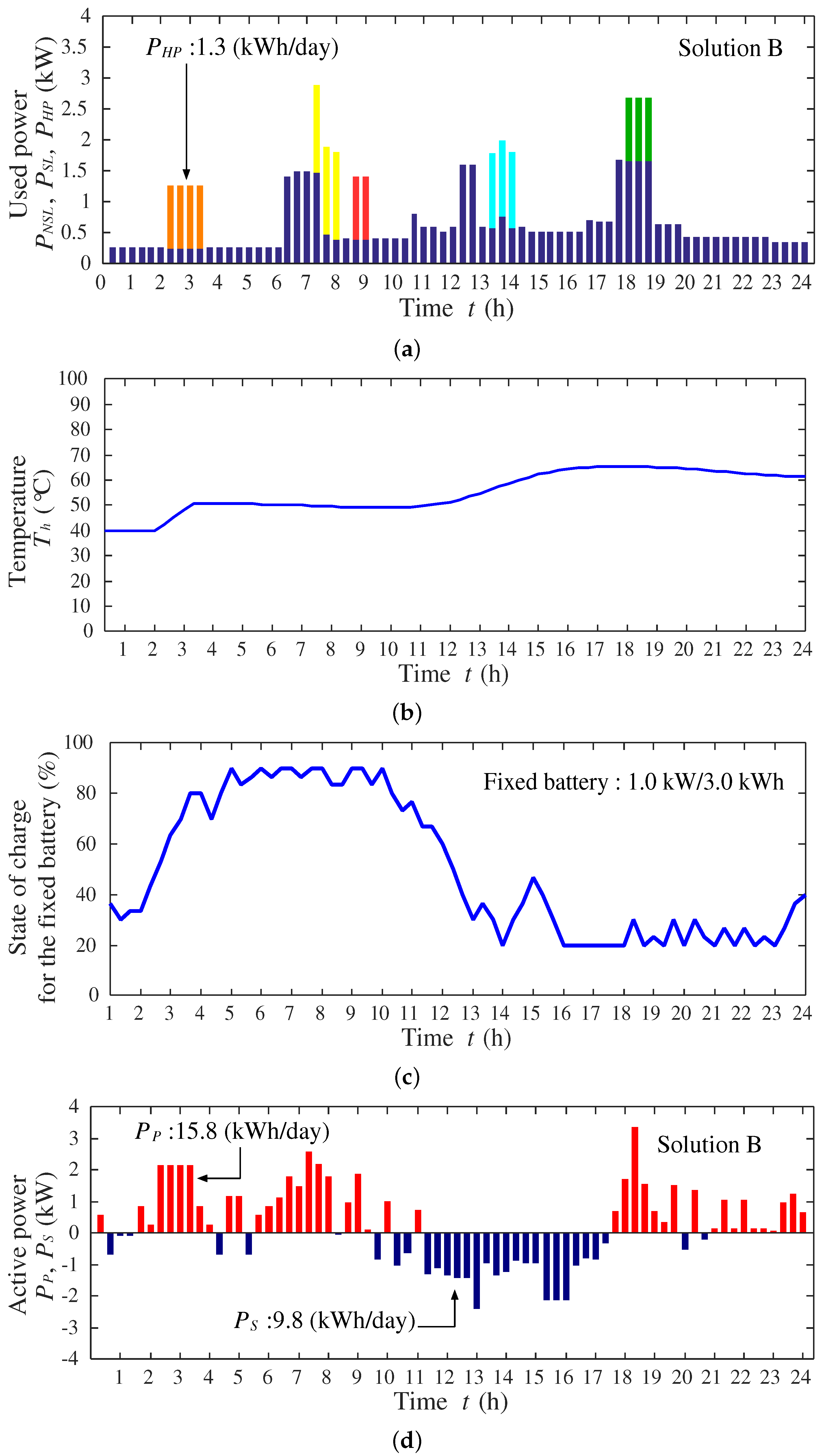
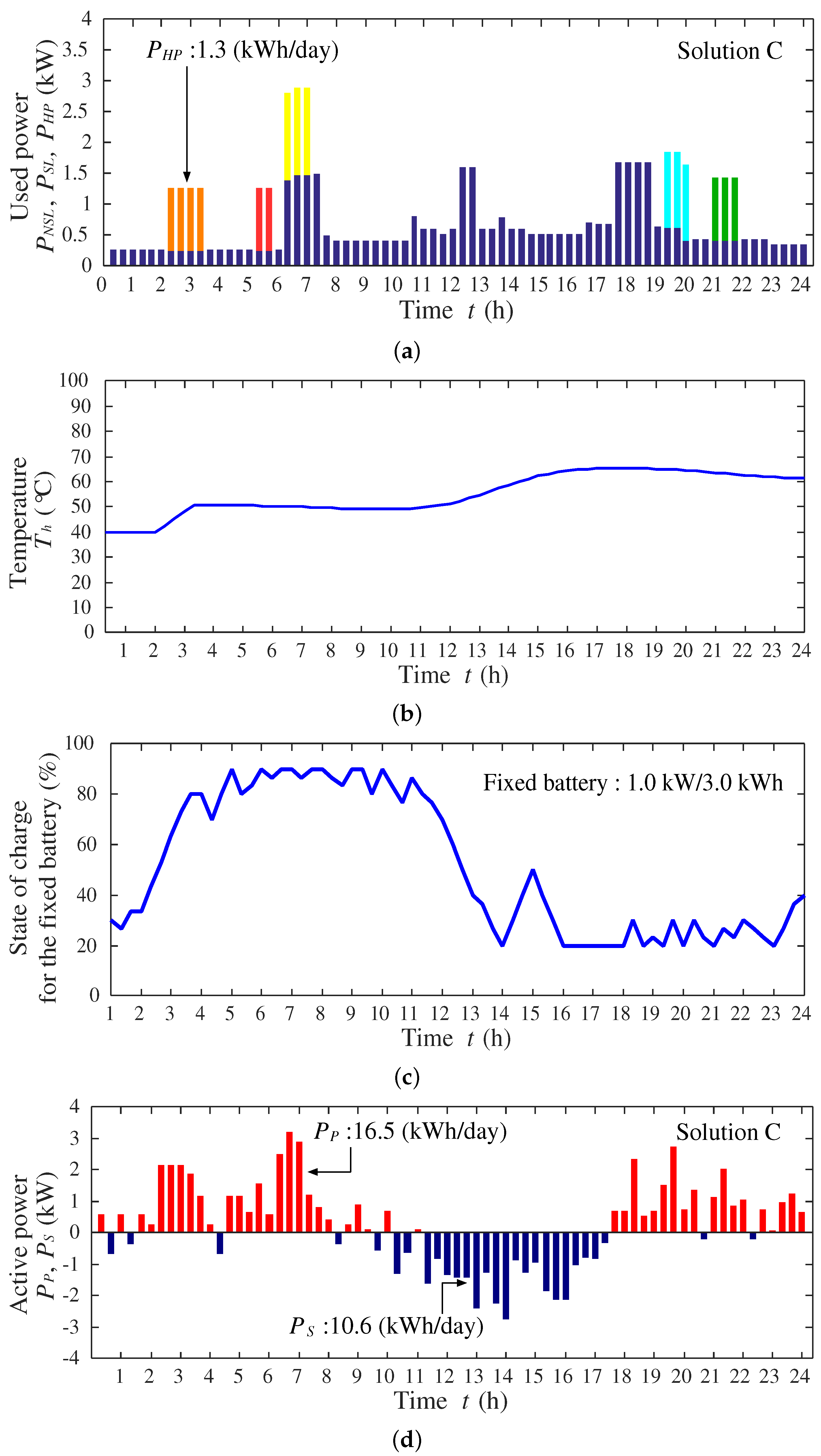


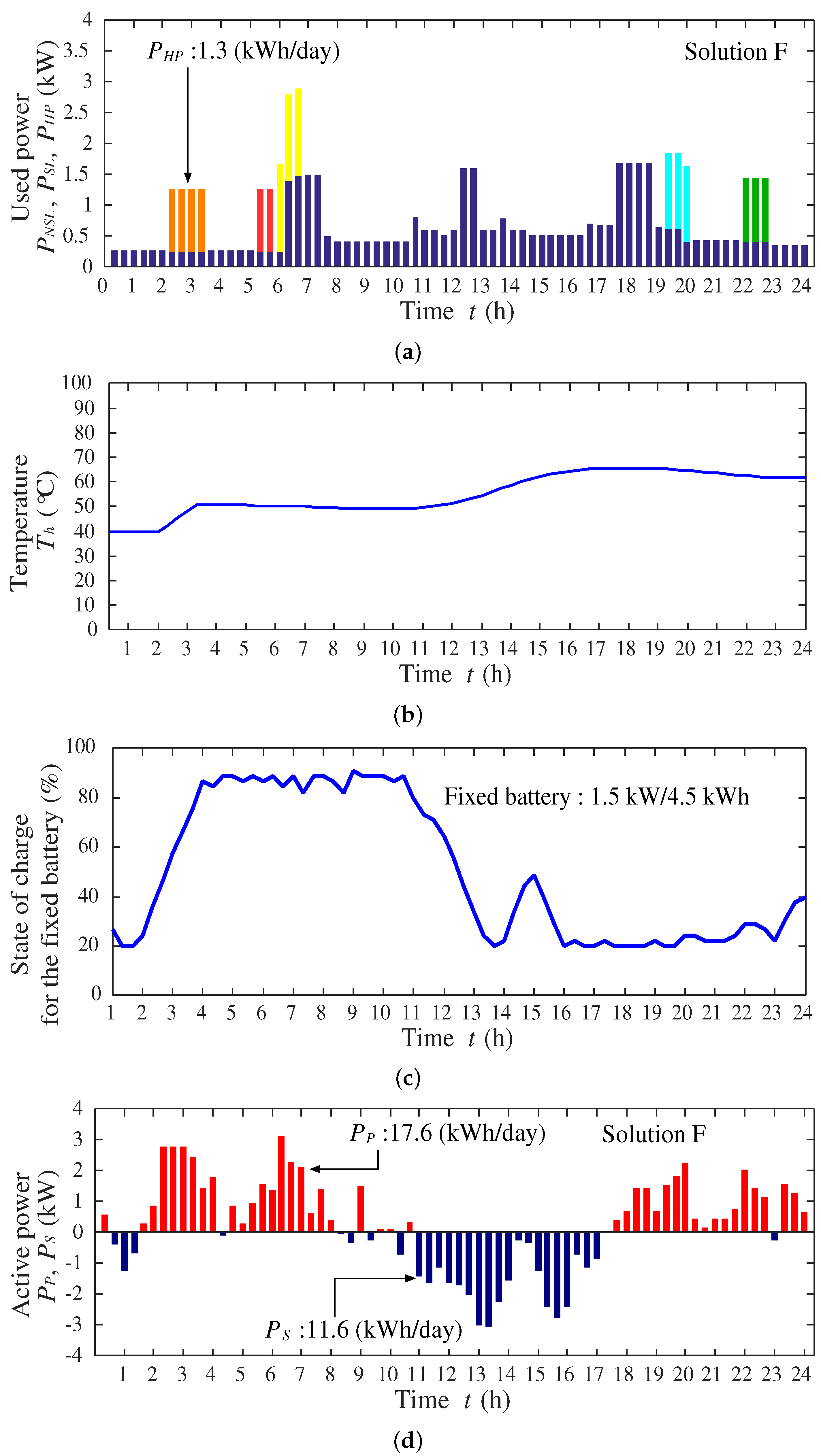
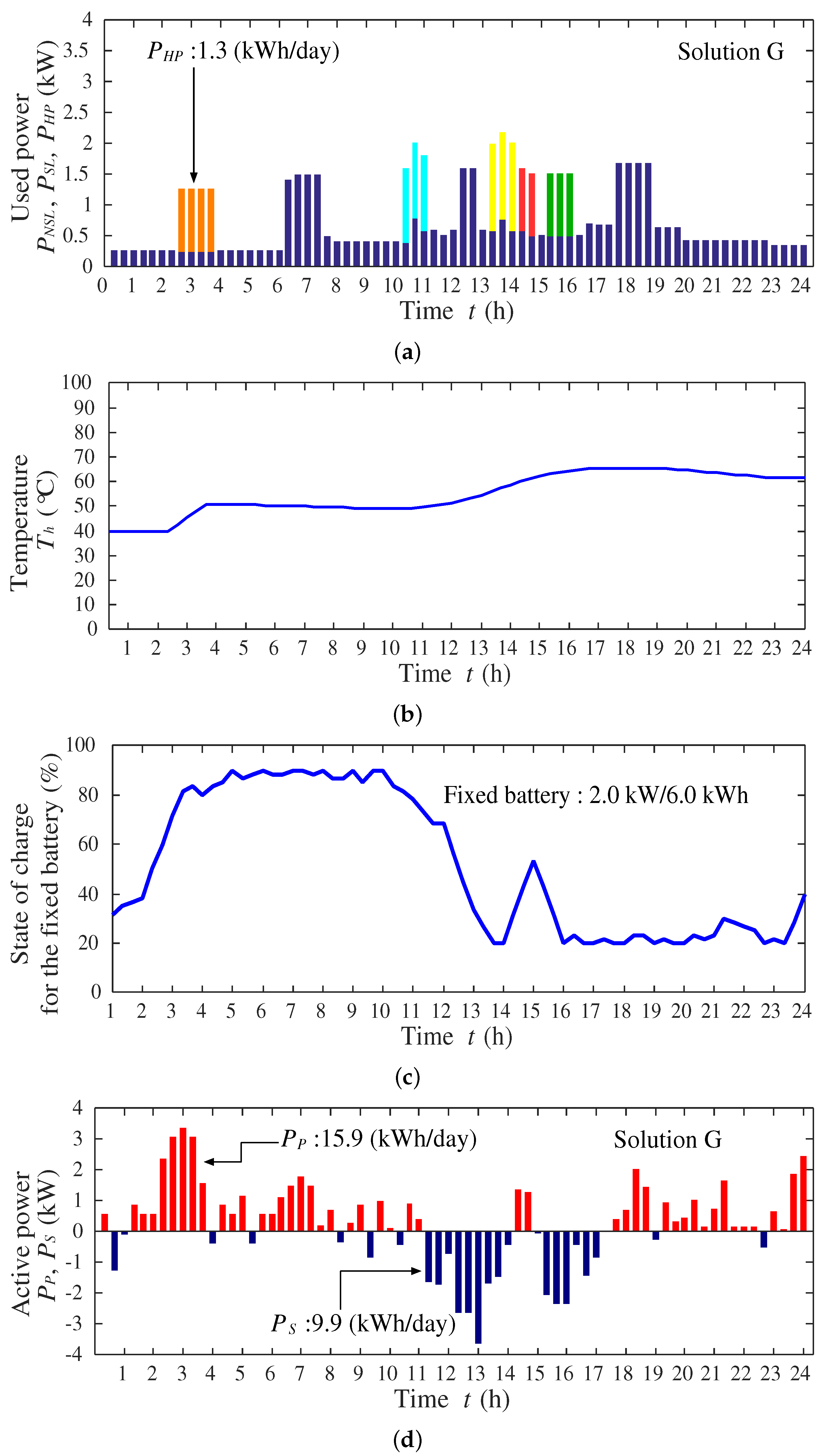
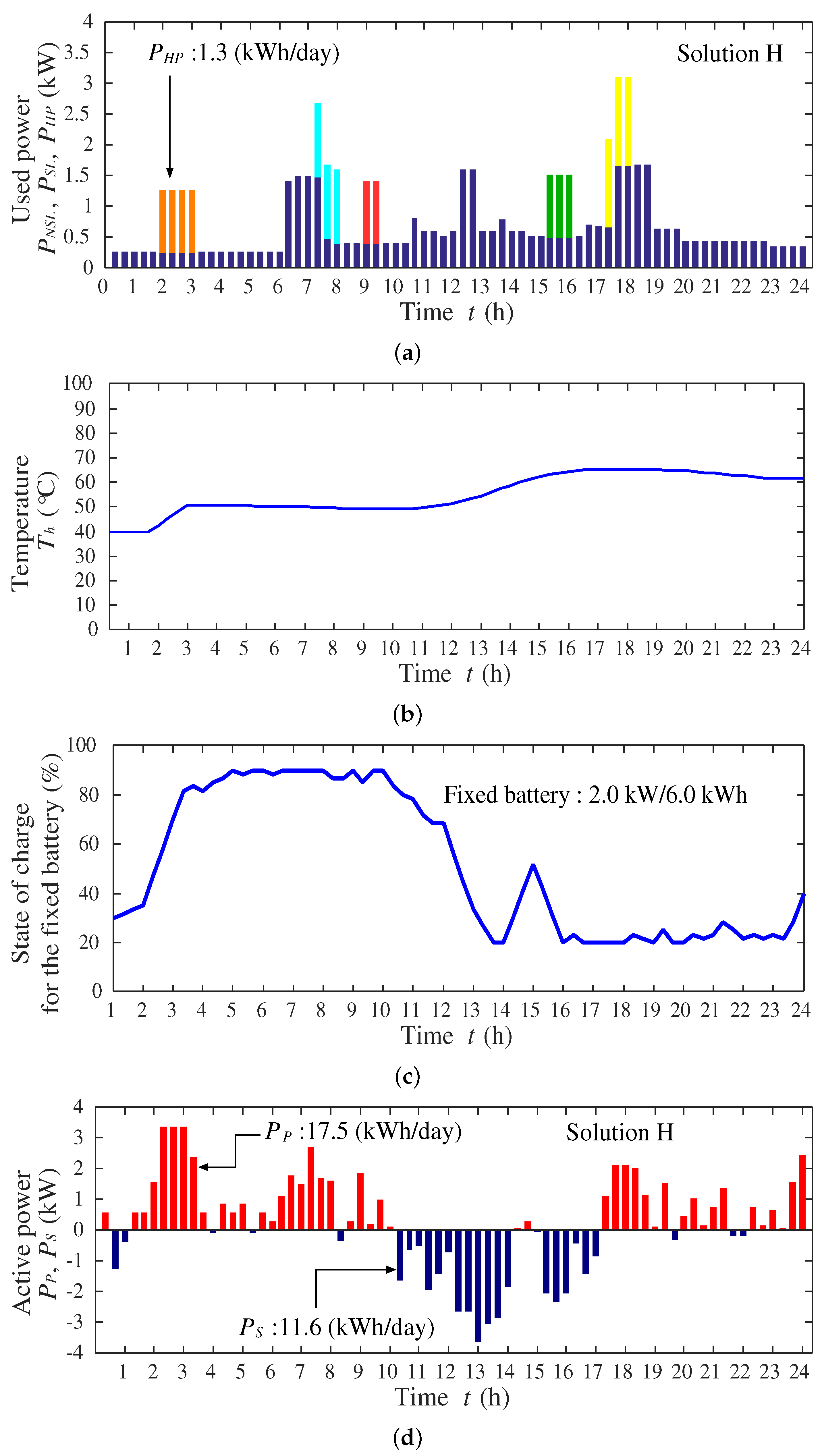
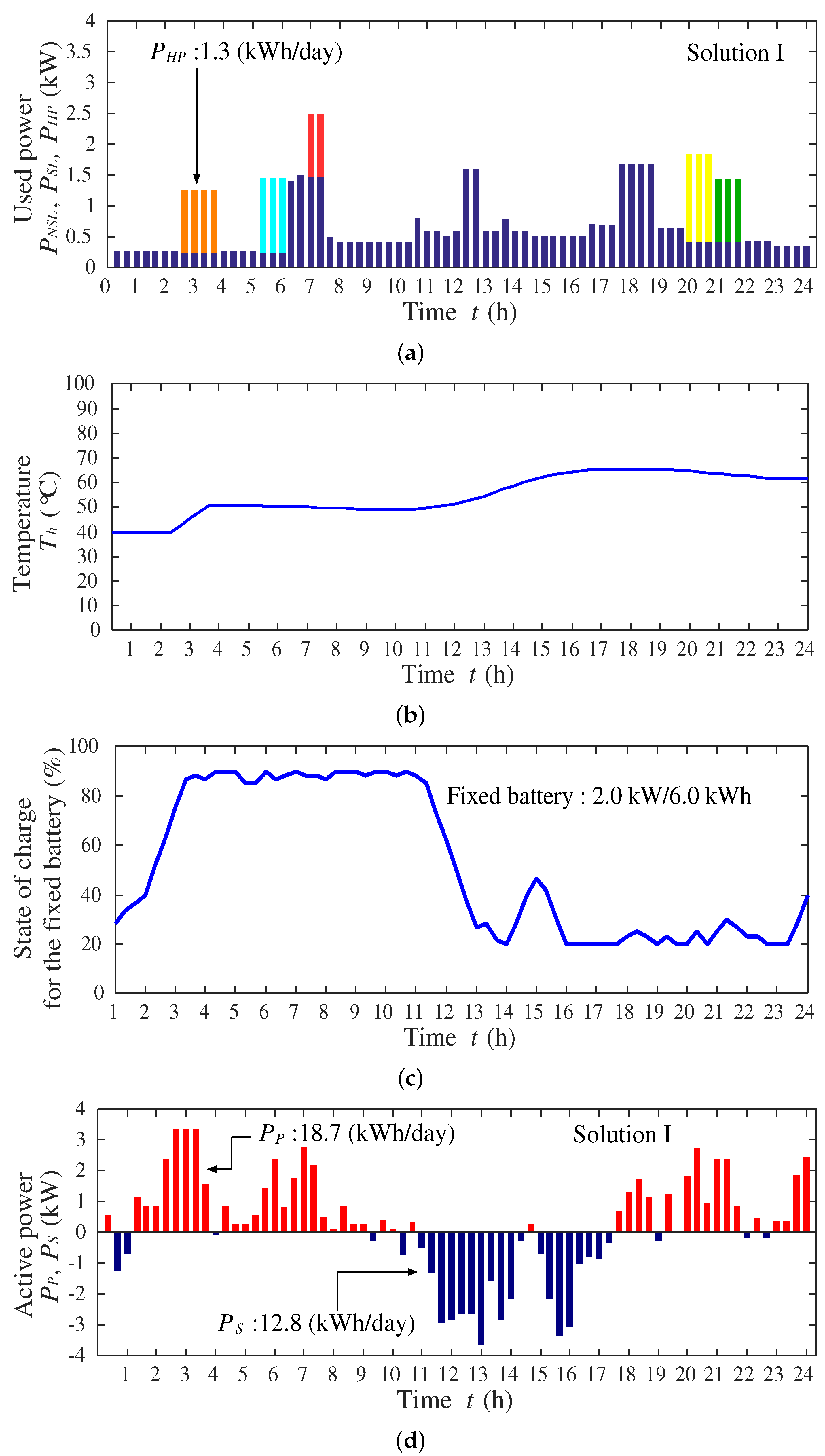
| Electric Appliance | Power Consumption (kW) | Use Time Zone |
|---|---|---|
| Refrigerator | 0.25∼0.3 | non-shiftable |
| Lighting | 0.1∼0.5 | load |
| IH (Induction Heating) cooking heater | 0.2∼0.7 | (kW) |
| TV | 0.085 | |
| Air conditioner | 0.2∼0.4 | |
| Clothing washer | 1.4 | shiftable |
| Dish washer | 1.2 | load |
| Iron | 1.2 | (kW) |
| Cleaner | 1.0 |
| Case | Case 1 | Case 2 | Case 3 | ||||||
|---|---|---|---|---|---|---|---|---|---|
| Solution | A | B | C | D | E | F | G | H | I |
| Regulation effort (Yen) | 0 | 11.2 | 22.6 | 0 | 11 | 23.1 | 0.2 | 10.4 | 22.6 |
| Electricity cost (Yen) | 16 | 4.0 | −7.0 | 7.0 | −5.0 | −17 | −3.0 | −14 | −26 |
© 2016 by the authors; licensee MDPI, Basel, Switzerland. This article is an open access article distributed under the terms and conditions of the Creative Commons Attribution (CC-BY) license (http://creativecommons.org/licenses/by/4.0/).
Share and Cite
Miyazato, Y.; Tahara, H.; Uchida, K.; Celestino Muarapaz, C.; Motin Howlader, A.; Senjyu, T. Multi-Objective Optimization for Smart House Applied Real Time Pricing Systems. Sustainability 2016, 8, 1273. https://doi.org/10.3390/su8121273
Miyazato Y, Tahara H, Uchida K, Celestino Muarapaz C, Motin Howlader A, Senjyu T. Multi-Objective Optimization for Smart House Applied Real Time Pricing Systems. Sustainability. 2016; 8(12):1273. https://doi.org/10.3390/su8121273
Chicago/Turabian StyleMiyazato, Yasuaki, Hayato Tahara, Kosuke Uchida, Cirio Celestino Muarapaz, Abdul Motin Howlader, and Tomonobu Senjyu. 2016. "Multi-Objective Optimization for Smart House Applied Real Time Pricing Systems" Sustainability 8, no. 12: 1273. https://doi.org/10.3390/su8121273
APA StyleMiyazato, Y., Tahara, H., Uchida, K., Celestino Muarapaz, C., Motin Howlader, A., & Senjyu, T. (2016). Multi-Objective Optimization for Smart House Applied Real Time Pricing Systems. Sustainability, 8(12), 1273. https://doi.org/10.3390/su8121273







